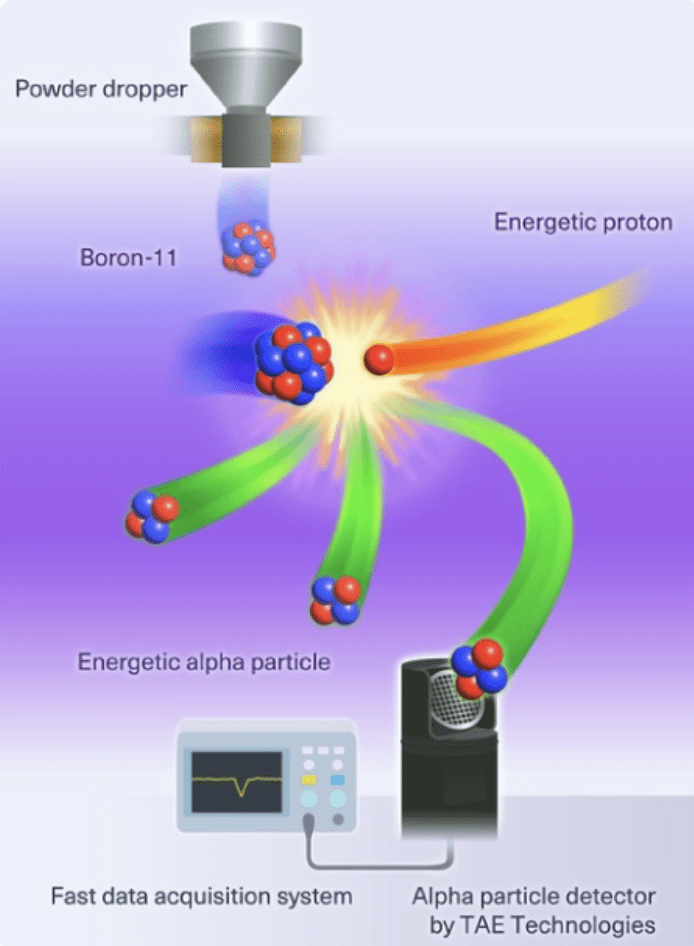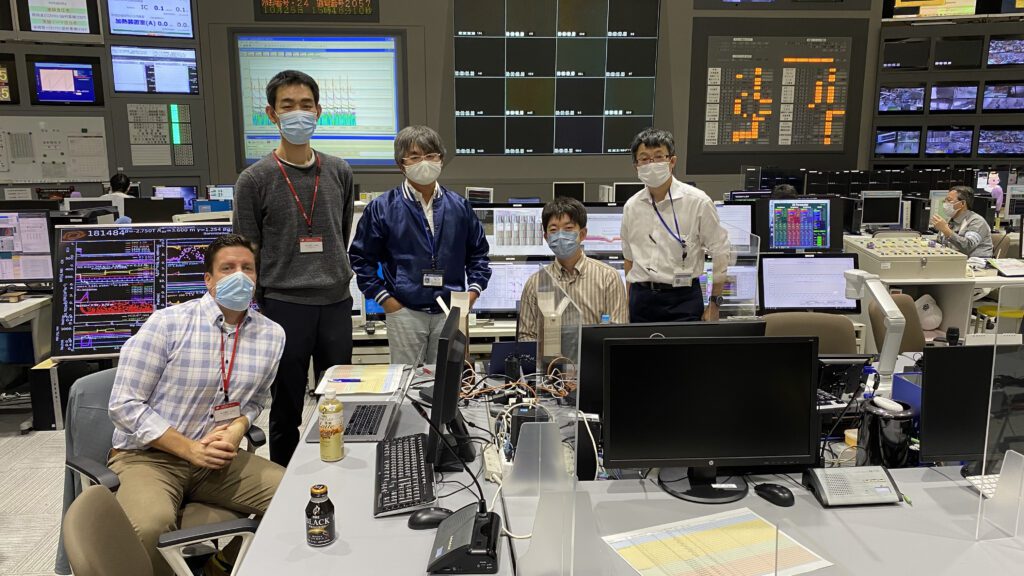Group Touts Milestone for Hydrogen-Boron Fusion Power
Credit to Author: Darrell Proctor| Date: Tue, 28 Feb 2023 13:30:13 +0000

A California-based group said it has completed the first-ever hydrogen-boron fusion experiments to produce a sustainable fuel for utility-scale fusion power.
TAE Technologies on Feb. 28, in a peer-reviewed paper published by the scientific journal Nature Communications, said its research supports the path to providing electricity from nuclear reactors fueled with hydrogen-boron, also known as p-B11 or p11B. TAE said its program, done in collaboration with Japan’s National Institute for Fusion Science (NIFS), focused on the first-ever hydrogen-boron fusion experiments in a magnetically confined fusion plasma. The group said it has “pioneered the pursuit of the cleanest and most economical path to providing electricity with hydrogen-boron fuel.”
The paper published Tuesday explains the outcome of the nuclear fusion reaction of hydrogen-boron during an experiment in NIFS’s Large Helical Device, or LHD. Scientists involved in the research describe the work of producing the conditions necessary for hydrogen-boron fusion in the LHD plasma, along with TAE’s development of a detector to make measurements of the hydrogen-boron reaction products, known as helium nuclei or alpha particles.
The researchers pointed out that while the reaction did not produce net energy, it demonstrates viability of aneutronic fusion and reliance on hydrogen-boron. Other companies, including Australia’s HB11 Energy, also are researching hydrogen-boron fusion technology. HB11 Energy’s technology uses hydrogen-boron fuel, but with a laser-ignited, non-thermal start reaction. The Australian group, along with others, also has yet to produce net energy from its technology.
More Investment in Fusion Research
The lead fusion coordinator for the U.S. Dept. of Energy (DOE) recently said investment in fusion research is poised to accelerate. “As the technology continues to mature, there will be a point where private investors feel that they must be invested in fusion, and I feel like we’re starting to reach that inflection point,” Scott Hsu said Feb. 16 in a webcast hosted by the National Academies of Science, Engineering and Medicine.
Hsu advises the DOE on issues related to fusion energy. He coordinates the efforts of all the agency’s offices to promote research, development, and demonstration projects in partnership with the private sector. “Whereas earlier on it was regarded as a very high-risk kind of activity, at some point later on it will be that everyone’s invested in it,” Hsu said during the webcast. “And so, the question is where are we right now, and I do think we’re on an overall growth trend given the macro picture.”
POWER has featured several articles about fusion research. Among others, read “Fusion Power May Be Closer Than You Think,” part of The POWER Podcast series. Also read “Could Fusion Energy Transform the Power Industry by 2035?”
Meanwhile, the Nikkan Kogyo newspaper in Japan reported that a government panel in that country is meeting Tuesday to discuss moving forward the timeline for construction of a prototype fusion nuclear reactor. The report said the group has looked at moving work ahead by at least five years, with the policy integrated into the country’s national energy strategy in March.
Japanese officials have said the country must restart more nuclear units that were idled after the Fukushima disaster in 2011, and build new next-generation reactors to meet the country’s goal of carbon neutrality by 2050.
U.S.-Japan Collaboration
TAE entered a partnership with the NIFS in 2021, with the groups working at a research institute in Toki City, Japan. The company said the hydrogen-boron project stemmed from a “longstanding collaboration between American and Japanese fusion researchers to explore aneutronic fusion.”
Aneutronic fusion is any form of fusion power in which energy is released in the form of charged particles, typically protons or alpha particles. Other fusion reactions may release as much as 80% of their energy in the form of neutrons.

TAE said the finding announced Tuesday “reflects years of collaborative international scientific fusion research, and represents a milestone in TAE’s mission to develop commercial fusion power with hydrogen-boron, the cleanest, most cost-competitive, and most sustainable fuel cycle for fusion.”
Michl Binderbauer, CEO of TAE Technologies, said, “This experiment offers us a wealth of data to work with and shows that hydrogen-boron has a place in utility-scale fusion power. We know we can solve the physics challenge at hand and deliver a transformational new form of carbon-free energy to the world that relies on this non-radioactive, abundant fuel.”
Numerous Groups Working on Fusion Energy
TAE is among nearly three dozen groups worldwide conducting research into fusion energy. The approaches vary, with different fuel types being studied along with reactor configurations. Scientists at the National Ignition Facility at the Lawrence Livermore National Laboratory in December of last year confirmed the first fusion reaction that created more energy than it consumed.
TAE, founded in 1998, has built five National Laboratory-scale devices. The company told POWER it has “successfully generated and confined fusion plasma more than 140,000 times.” The company is currently building and designing two machines, called Copernicus and Da Vinci, that it said “will be able to demonstrate net energy and deliver power to the grid, respectively.” TAE said it expects to demonstrate net energy on its Copernicus research reactor in the next few years.

The group in its research paper said its latest work “represents an important step toward development of hydrogen-boron fusion. In layperson’s terms, the company is one step closer to the realization of a fusion power plant that will ultimately produce clean electricity, with only helium, also known as three alpha particles, as a byproduct.” The group noted that “three alpha particles are the hallmark of hydrogen-boron fusion energy, and inspired TAE’s founders to name the company Tri Alpha Energy, now TAE Technologies.”
TAE said that by pursuing hydrogen-boron as a fuel cycle, the company “has anticipated the true demands of commercial, daily use of fusion energy.” The group said that most research into fusion is focused on combining hydrogen isotopes deuterium-tritium (D-T) to use as fuel; the tokamak machines commonly used in fusion concepts are limited to D-T fuel.
Compact Linear Design
TAE said its compact linear design “uses an advanced accelerator beam-driven field-reversed configuration (FRC) that is versatile, and can accommodate all available fusion fuel cycles, including p-B11, D-T and deuterium-helium-3 (D-He3 or D3He).” The company said its current plan is to secure licensing of its technology soon enough to meet a goal “of connecting the first hydrogen-boron fusion power plant to the grid in the 2030s.”
TAE said the FRC configuration advances “a modular and easy-to-maintain design that will have a compact footprint with the potential to take advantage of a more efficient magnetic confinement methodology, which will get up to 100x more power out, as compared to tokamaks.”
The best-known tokomak is the ITER (International Thermonuclear Experimental Reactor) project in France, a facility years in the making that plans to test its first plasma in 2025. The ITER plans to start D-T fuel operation in 2035.
Advanced Fusion Fuel
Researchers at Japan’s NIFS said hydrogen-boron is considered an advanced fusion fuel because it “enable(s) the concept of cleaner fusion reactors. This achievement is a big first step towards the realization of a fusion reactor using advanced fusion fuel.”
The scientists wrote in the research paper: “While the challenges of producing the fusion core are greater for p-11B than D-T, the engineering of the reactor will be far simpler. … Stated simply, the p-11B path to fusion trades downstream engineering challenges for present day physics challenges. And the physics challenges can be overcome.”
The researchers on Tuesday outlined what they consider several highlights from the TAE/NIFS collaboration, including:
- Hydrogen-boron fusion power will be the cleanest, most cost-competitive, and most sustainable fuel cycle for fusion.
- TAE has developed a sensor capable of detecting alpha particles (helium nuclei)—the only emissions from a hydrogen-boron fusion reaction.
- TAE and NIFS collaboratively conducted the experiments in Japan using NIFS’ Large Helical Device (stellarator).
- Japan is invested in fusion because it will offer a much safer, carbon-free, radiation-free, waste-free and meltdown-free approach to nuclear energy. And in the case of hydrogen-boron fusion, it will also be very inexpensive to fuel.
- TAE’s field-reversed configuration reactor offers a variety of benefits over other reactors, including tokamaks, including ease of maintenance, a compact footprint, and more efficient magnetic confinement that will yield up to 100x more power out.
- TAE’s FRC reactors are designed to work with all fusion fuel cycles, though the company only plans to pursue hydrogen-boron. Companies interested in FRC for DT or deuterium-helium-3 (D-He3) fusion can license proprietary FRC reactor designs from TAE Technologies.
- TAE Technologies is on track to demonstrating the viability of net energy out by around mid-decade and connecting the first hydrogen-boron fusion power plant to the grid by the early 2030s.
—Darrell Proctor is a senior associate editor for POWER (@POWERmagazine).
The post Group Touts Milestone for Hydrogen-Boron Fusion Power appeared first on POWER Magazine.